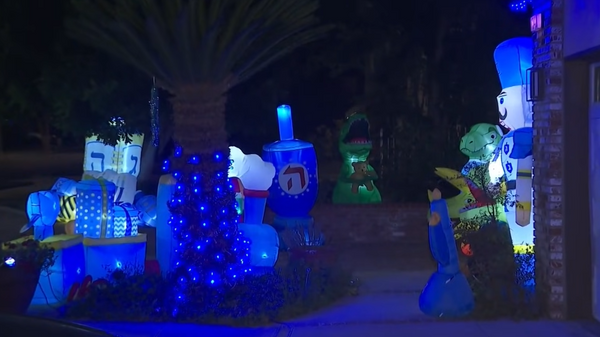With smartphone screens glowing and fingers furiously tapping to keep a pixelated yellow bird aloft through endless green pipes, Flappy Bird became an overnight sensation in early 2014.
What began as a quiet indie release quickly rocketed to viral fame, but its time at the top was fleeting: Flappy Bird was removed from app stores in February, just one month into its meteoric rise.
Flappy Bird’s developer, Dong Nguyen, removed it from the App Store and Google Play, saying it was too addictive and that he felt guilty for its impact.
Fans were heartbroken.
Now, more than a decade later, Flappy Bird is flapping back to life. But before we get to that, here’s how it all started.
Flappy Bird Soared to the Top
Vietnamese developer Dong Nguyen created Flappy Bird under his studio “.Gears.” It debuted on the App Store in May 2013 but initially failed to gain much traction.
Things changed in January 2014 when the game exploded in popularity, quickly becoming the most popular free game on the App Store.
Shortly after, on January 30, it was launched on Google Play and soared to the top of the charts there, too (per PC Mag).

The gameplay was deceptively simple: players tapped the screen to keep a yellow bird named Faby in flight, navigating through gaps between green pipes. If they stopped tapping, Faby would descend, making it challenging to rack up a high score.
IGN described it best: “The inevitability of failure for the slightest mistakes creates a tension that’s difficult to put words to.”
That mix of simplicity and challenge made Flappy Bird wildly addictive, drawing in millions of daily downloads.
At its peak, Nguyen reportedly earned $50,000 daily ad revenue from the game (via The Verge).
How a Quiet Coder Created a Global Craze

Dong Nguyen created Flappy Bird while living with his parents in Hanoi, Vietnam. He had a full-time job programming location devices for taxis and quietly built games in his spare time.
Nguyen had been coding since childhood, writing a chess game at 16 and interning at Punch Entertainment, one of Hanoi’s few gaming companies, after placing in the top 20 of a university programming competition.
While at Punch, he became interested in creating simple mobile games for people to play on the go.
A month before Flappy Bird, Nguyen released Shuriken Block, a punishingly hard title that failed to take off. With Flappy Bird, he aimed for something more intuitive.
A year earlier, he had already sketched a pixelated bird on his computer and drew inspiration from Super Mario Bros. for the green pipes. The game’s minimalist format echoed paddleball mechanics.
On Reunification Day 2013, he tweeted about his “new simple game,” then called Flap Flap.

During his time at Punch Entertainment, he felt the urge to create a game that people could play on the go without too much effort. A month before developing Flappy Bird, Nguyen had released another mobile game, Shuriken Block, which was “deceptively ruthless” and didn’t quite leave a lasting impact on the App Store.
This is why he aimed for Flappy Bird to have a simpler format where the player could tap anywhere. A year prior, he had toyed with the drawing of a pixelated bird on his computer and drew inspiration from Super Mario Bros. for the green pipes through which the bird would navigate.
The creator modeled Flappy Bird on paddleball and similarly limited the game to minimal elements. On Reunification Day 2013, he posted a series of tweets on X (formerly Twitter) about his “new simple game” and didn’t resort to any other form of marketing. The game was initially called Flap Flap.

At first, the game flopped. But by December, it had caught fire on social media.
Its success propelled Nguyen’s other games, Shuriken Block and Super Ball Juggling, into the App Store’s Top 10. But the sudden spotlight left him overwhelmed.

He began receiving messages from users blaming the game for disrupting their lives. The volume and intensity of the backlash weighed on him.
In February 2014, despite 18 million downloads, Nguyen pulled Flappy Bird from all platforms. His announcement on X triggered another 10 million downloads in just 22 hours (per The Rolling Stone).

Since then, Nguyen has stayed mostly out of the public eye, occasionally posting previews of other games to redirect attention from Flappy Bird.
The Aftermath
The sudden end of Flappy Bird sparked a storm of speculation and chaos online. Unfounded rumors swirled that Nintendo was planning to sue Nguyen.
Amid the frenzy, Nguyen received death threats, and clones of the game flooded the App Store and Google Play. Phones with Flappy Bird pre-installed were listed on eBay for thousands of dollars.

The removal did bring some unexpected closure. Kotaku, which had previously accused Nguyen of stealing art from Nintendo, retracted its criticism.
The site published an apology from writer Jason Schreier, who admitted the article had been “rash” and “below my usual standards.”
He also extended a direct apology to Kotaku readers and Nguyen, citing his “poorly-chosen words.”
Rumors That Refuse to Die
As one of the biggest cultural moments of the 2010s, Flappy Bird stirred a wave of online obsession and left fans searching for explanations.
Among the most persistent rumors was that Nintendo had sued Dong Nguyen over assets in the game resembling those in Super Mario Bros.
Many took the similarities between Flappy Bird’s green pipes and Nintendo’s iconic visuals as evidence.

The speculation reached such a fever pitch that Nintendo finally responded.
On February 10, 2014, spokesperson Yasuhiro Minagawa told The Wall Street Journal, “While we usually do not comment on the rumours and speculations, we have already denied the speculation.”
Flappy Bird 2.0

Flappy Bird is returning nearly a decade after it disappeared, but not in the way fans might expect.
After Dong Nguyen let the trademark lapse, the rights were eventually acquired by Mobile Media Partners and then transferred in 2024 to a fan-led group called the Flappy Bird Foundation (per IGN).
The Foundation also picked up rights to a little-known 2009 game, Piou Piou vs. Cactus, which bore a striking resemblance to Flappy Bird in both visuals and gameplay.
Their revival features a stamina bar to curb excessive play, which once drove Nguyen to pull the game.

Flappy Bird reemerged in 2024 as a Telegram-based crypto game, letting users earn passive points through ads and invites. The move drew backlash.
On September 15, Nguyen posted on X that he had no involvement and didn’t support crypto.
Facing criticism, the Foundation released a Web 2 version via the Epic Games Store in April 2025. It includes a Classic and Quest modes, with no blockchain elements (per ESI).
A broader relaunch is planned for October 2025 on the App Store, Google Play, and web browsers. The game will offer new characters like “Peng,” the penguin, and “Quirky” with a rainbow mohawk, plus multiplayer and “rivals” modes where players can face off against 99 others.

The official website teases basketball-style challenges and additional upgrades. Creative director Michael Roberts told IGN, “We have big plans for our little Bird!”
FAQ
What happens at 999 Flappy Bird?
There’s no official level 999 or secret ending in Flappy Bird. The game has no final stage; players aim to rack up the highest score possible.
During its peak, a wave of fake videos claimed that something mysterious happened at 999 points, but none were real (per Time).







